Structural insights into pathogenic mechanism of hypohidrotic ectodermal dysplasia caused by ectodysplasin A variants
- PMID: 36765055
- PMCID: PMC9918506
- DOI: 10.1038/s41467-023-36367-6
Structural insights into pathogenic mechanism of hypohidrotic ectodermal dysplasia caused by ectodysplasin A variants
Abstract
EDA is a tumor necrosis factor (TNF) family member, which functions together with its cognate receptor EDAR during ectodermal organ development. Mutations of EDA have long been known to cause X-linked hypohidrotic dysplasia in humans characterized by primary defects in teeth, hair and sweat glands. However, the structural information of EDA interaction with EDAR is lacking and the pathogenic mechanism of EDA variants is poorly understood. Here, we report the crystal structure of EDA C-terminal TNF homology domain bound to the N-terminal cysteine-rich domains of EDAR. Together with biochemical, cellular and mouse genetic studies, we show that different EDA mutations lead to varying degrees of ectodermal developmental defects in mice, which is consistent with the clinical observations on human patients. Our work extends the understanding of the EDA signaling mechanism, and provides important insights into the molecular pathogenesis of disease-causing EDA variants.
© 2023. The Author(s).
Conflict of interest statement
The authors declare no competing interests.
Figures
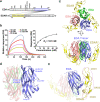



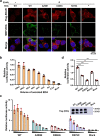
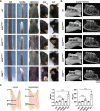
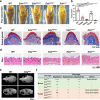
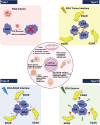
Similar articles
-
Gene Mutations of the Three Ectodysplasin Pathway Key Players (EDA, EDAR, and EDARADD) Account for More than 60% of Egyptian Ectodermal Dysplasia: A Report of Seven Novel Mutations.Genes (Basel). 2021 Sep 8;12(9):1389. doi: 10.3390/genes12091389. Genes (Basel). 2021. PMID: 34573371 Free PMC article.
-
Turkish Ectodermal Dysplasia Cohort: From Phenotype to Genotype in 17 Families.Cytogenet Genome Res. 2019;157(4):189-196. doi: 10.1159/000499325. Epub 2019 Apr 12. Cytogenet Genome Res. 2019. PMID: 30974434
-
Hypohidrotic ectodermal dysplasia: clinical and molecular review.Int J Dermatol. 2018 Aug;57(8):965-972. doi: 10.1111/ijd.14048. Epub 2018 May 31. Int J Dermatol. 2018. PMID: 29855039 Review.
-
Deleterious Variants in WNT10A, EDAR, and EDA Causing Isolated and Syndromic Tooth Agenesis: A Structural Perspective from Molecular Dynamics Simulations.Int J Mol Sci. 2019 Oct 24;20(21):5282. doi: 10.3390/ijms20215282. Int J Mol Sci. 2019. PMID: 31652981 Free PMC article.
-
Molecular aspects of hypohidrotic ectodermal dysplasia.Am J Med Genet A. 2009 Sep;149A(9):2031-6. doi: 10.1002/ajmg.a.32855. Am J Med Genet A. 2009. PMID: 19681132 Review.
Cited by
-
Skin Development and Disease: A Molecular Perspective.Curr Issues Mol Biol. 2024 Jul 30;46(8):8239-8267. doi: 10.3390/cimb46080487. Curr Issues Mol Biol. 2024. PMID: 39194704 Free PMC article. Review.
-
Retinoic acid drives surface epithelium fate determination through the TCF7-MSX2 axis.Cell Mol Life Sci. 2024 Dec 27;82(1):16. doi: 10.1007/s00018-024-05525-4. Cell Mol Life Sci. 2024. PMID: 39725818 Free PMC article.
-
A novel EDA variant that causes X-linked hypohidrotic ectodermal dysplasia in a Chinese family.BMC Pregnancy Childbirth. 2025 Aug 8;25(1):827. doi: 10.1186/s12884-025-07963-9. BMC Pregnancy Childbirth. 2025. PMID: 40781288 Free PMC article.
-
The EDA/EDAR/NF-κB pathway in non-syndromic tooth agenesis: A genetic perspective.Front Genet. 2023 Apr 3;14:1168538. doi: 10.3389/fgene.2023.1168538. eCollection 2023. Front Genet. 2023. PMID: 37077539 Free PMC article. Review.
-
Spatial and Temporal Expression of Ectodysplasin-A Signaling Pathway Members During Mandibular Condylar Development in Postnatal Mice.J Histochem Cytochem. 2023 Nov;71(11):631-642. doi: 10.1369/00221554231201691. Epub 2023 Sep 20. J Histochem Cytochem. 2023. PMID: 37731334 Free PMC article.
References
-
- Wright, J. T. et al. in GeneReviews(®) (University of Washington, Seattle, Seattle (WA), 2017). - PubMed
Publication types
MeSH terms
Substances
LinkOut - more resources
Full Text Sources
Molecular Biology Databases

